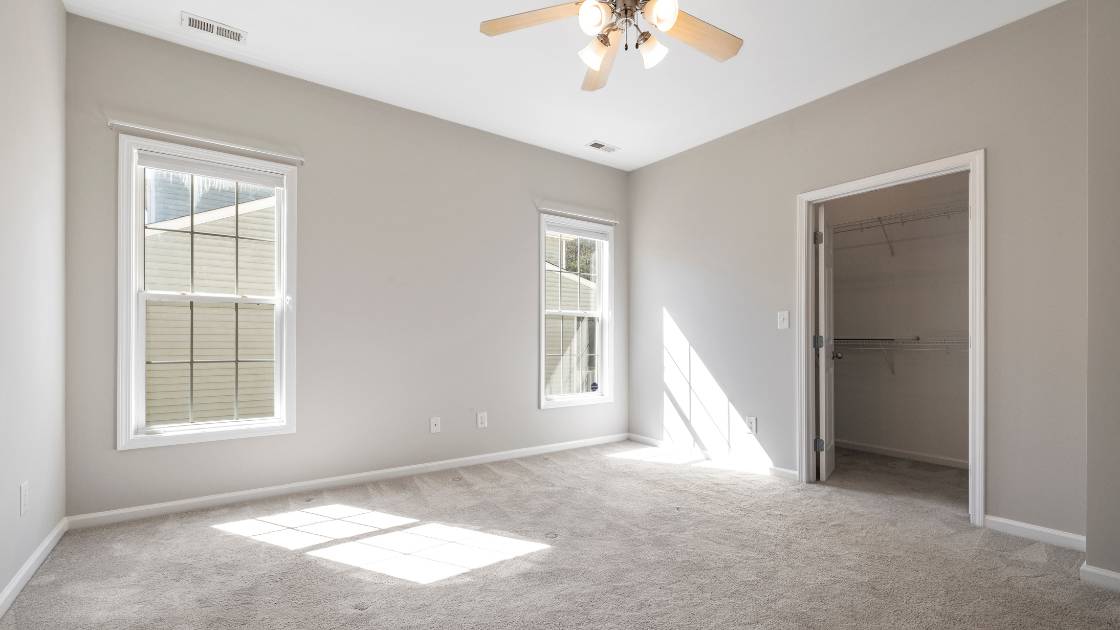Are you worried that your landlord will be charging you a big bill because he has to replace the carpet after you move out?
It’s a legitimate concern, especially if the carpet is showing serious signs of age or has significant stains or other issues.
In this article, I am going to discuss when your landlord can charge you for replacing your carpet and some things you can do to prevent that from happening.
If you don’t have time to read the full article, here the short answer:
Your landlord will generally charge you for replacing the carpet if you damage the carpet carpet beyond what is expected from normal wear and tear. These would include things like large holes, burns, significant and irremovable stains, lingering odors (e.g., from pet stains) and the like.
I’ll give some examples of what I found to be acceptable and normal wear and tear vs. what will likely fall outside regular use, which can lead to a charge by your landlord.
Let’s get into it!
The information contained in this post is for informational purposes only. It is not legal advice. You should seek the advice of a qualified legal professional before making any decisions relating to the topics covered by this article.
We may earn commissions from products and services that are purchased or recommended through our website as part of our affiliate partnerships. As an Amazon affiliate, we may earn from qualifying purchases.
When Can a Landlord Charge Me for Replacing the Carpet?
Although every state has its local landlord-tenant law, there are some general principles that seem to apply where your landlord can charge you for carpet replacement.
In contrast, there are also conditions where you aren’t responsible for the cost.
Normal Carpet Wear and Tear
It’s normal for carpets and any home furnishing to wear and tear over time. If a carpet needs replacement and you have not caused damage to the carpet other than normal wear and tear, then you should not have the bear the cost of such replacement.
Normal wear and tear includes:
- General fading and discoloration due to age and use
- Moderate marks and stains
- Thinning carpet texture due to foot traffic or furniture placement
- Holes due to carpet aging
The idea here is that carpets, like almost everything else, has a useful life, and it is unfair to impose on a tenant the full cost of buying a brand new carpet when the carpet was due to be replaced anyway due to age.
As a general rule, most landlords will replace the carpet anyway when it is time, but there may be some unscrupulous landlords who will try to pin the cost of a new carpet on a tenant.
Be aware of this and make note of the condition of the carpet when you move in – if it looks old already, then note that on your move in checklist.
You don’t necessarily have to ask them to replace it before move-in, but it doesn’t hurt to make note of the carpet’s age and condition when you move-in, so you can point to that when you move out.
As with all things tenancy related, the first place to check is your lease. It may talk about carpets and flooring specifically. Also, you should review the provisions dealing with security deposits and moving out – they may discuss what may be deducted and what may not.
Damage Caused By Tenants
These kinds of damage go beyond the normal wear and tear of a carpet that a tenant causes.
They might include:
- Large tears and rips from misuse
- Irremovable stains
- Pet urine or vomit scent lingering
- Burns
For this, the landlord will obviously charge the tenant for damages. The price, however, depends on how serious the damage is.
If it’s just run of the mill stains (like pet urine or drinks) that require deep cleaning, then the landlord may only charge you for cleaning.
On the other hand, if the stains are significant and can’t be removed, the landlord may charge you for replacement costs.
There may also be state and local laws governing carpet and flooring and when a landlord is responsible for replacing or repairing such items. If you want to research your state’s landlord tenant laws, I have collected them here.
How Long is a Carpet’s Useful Life?
Generally, the useful life of a carpet is around 5 years. So bear this in mind when discussing carpet replacement issues with your landlord.
If it turns out that the carpet’s useful life was exceeded during your tenancy, this could be very helpful in negotiating with your landlord around any replacement requests they make.
Source: HUD (page 57)
Depending on jurisdiction, a landlord may also only be able to charge for replacement costs with depreciation factored in.
In other words, if the carpet was already four years old (and had a useful life of 5 years) when it needed to be replaced due to something you did, the landlord may not be able to charge you for the full cost of a new carpet because it would have needed to be replaced in a year anyway.
When Does a Landlord Need to Replace a Carpet?
In general, a carpet should be replaced when it’s useful life is over or if it is so damaged that it cannot function properly. But there are cases when a carpet must be replaced and that usually occurs when the condition of the carpet poses a health hazard or makes the property otherwise uninhabitable.
That often happens in the case where there has been flooding or a significant leak from the roof and the carpet has developed a serious mold problem.
To learn more about what you can do when there is a mold problem in your rental, check out my article on the topic here.
Can My Landlord Charge Me if I Want to Replace the Carpet Myself?
If you’re planning to replace the carpet by yourself for whatever reason, review your leasing agreement and check if you’re allowed to make such updates.
You also need to bring this matter to your landlord to see if they can work with your decision.
If your lease does not allows replacement without landlord consent, you may be charged for property damage, which will cost you even more.
Take Away
So there you have it – an answer to the question of whether your landlord can charge you for replacing the carpet. Hope this has been helpful and happy renting!

